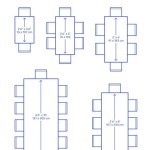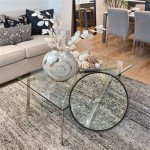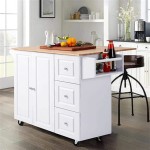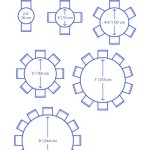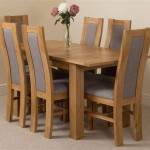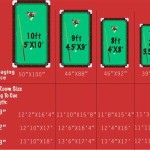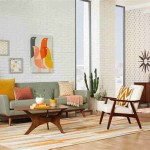Matching Dining Table and Coffee Table: A Guide to Cohesive Interior Design
Creating a visually appealing and harmonious living space often hinges on the careful selection and coordination of furniture. Among the essential pieces in any home, the dining table and coffee table play pivotal roles, both functionally and aesthetically. The decision of whether to match these two pieces or opt for contrasting styles requires thoughtful consideration of various factors, including room size, existing décor, personal preferences, and the desired ambiance.
A cohesive design scheme evokes a sense of order and balance, promoting relaxation and comfort. Matching, or at least carefully coordinating, the dining table and coffee table can be a powerful tool in achieving this goal. However, “matching” doesn’t necessarily mean identical copies. It encompasses a broader spectrum of strategies, ranging from using the same materials and finishes to selecting pieces that share a common design aesthetic.
Conversely, introducing contrast can inject personality and visual interest into a room, preventing it from feeling monotonous. Deliberately choosing pieces with differing styles or materials can create focal points and highlight individual elements within the overall design. The key lies in understanding the principles of interior design and applying them strategically to achieve the desired effect.
Key Considerations for Matching or Coordinating
Before making any decisions, several factors should be taken into account. These considerations will help guide the selection process and ensure that the chosen pieces contribute positively to the overall aesthetic of the space.
First, the size and layout of the room are crucial. In smaller spaces, matching furniture can create a sense of visual unity that makes the room feel larger and more organized. Too much variation in a small space can feel cluttered and overwhelming. Conversely, in larger rooms, a more eclectic approach with contrasting pieces can add depth and visual interest, preventing the space from feeling sterile and impersonal.
Second, the existing décor style should be carefully considered. If the room already has a defined style, such as modern, traditional, or bohemian, the dining table and coffee table should complement that style. Matching pieces within the same style family will reinforce the existing design scheme, while contrasting pieces can add a touch of unexpected flair, provided they are integrated thoughtfully.
Third, personal preferences play a significant role. After all, the living space should reflect the personality and lifestyle of its inhabitants. Whether to prioritize a cohesive, matching look or a more eclectic, contrasting style is ultimately a matter of individual taste. However, it’s important to strike a balance between personal expression and the principles of good design.
Strategies for Achieving a Cohesive Look with Matched Furniture
When aiming for a cohesive design, several strategies can be employed to ensure that the dining table and coffee table work harmoniously together.
Using the same materials is perhaps the most straightforward approach to matching furniture. For example, a dining table and coffee table both crafted from solid oak with a similar finish will naturally complement each other. This approach creates a sense of unity and visual consistency. However, be mindful of the potential for monotony. Introduce subtle variations in texture or design to prevent the look from becoming too repetitive.
Another strategy is to select pieces that share a common design element. This could be a similar leg style, tabletop shape, or decorative detail. For instance, a dining table and coffee table with tapered legs in a mid-century modern style will create a coordinated look, even if the materials differ slightly. Paying attention to these subtle design cues can effectively tie the two pieces together.
Furthermore, consider the overall scale and proportion of the pieces. A dining table that is significantly larger or more ornate than the coffee table can create an imbalance in the room. Conversely, a coffee table that is too small in relation to the dining table may appear insignificant. Strive for a harmonious relationship in terms of size and visual weight.
Finally, think about the color palette. While the wood tones or metal finishes might be perfectly matched, avoid a monotonous color scheme by bringing in complementary hues through accessories such as rugs, pillows, and artwork. These elements will add visual interest and personality to the space without disrupting the overall cohesion.
Strategies for Incorporating Contrast and Visual Interest
While a cohesive look has its merits, intentionally introducing contrast can create a more dynamic and visually stimulating environment. The key is to do so strategically, ensuring that the contrasting elements complement each other rather than clashing.
Mixing materials is a popular way to add contrast. For example, pairing a wooden dining table with a glass-topped coffee table introduces textural and visual variety. The warmth of the wood contrasts with the sleekness of the glass, creating a more interesting and dynamic look. However, be sure that the materials chosen are still compatible with the overall style of the room.
Another strategy is to play with shapes and forms. A rectangular dining table paired with a round coffee table can soften the angular lines of the room and create a more inviting atmosphere. The contrasting shapes also add visual interest and prevent the space from feeling too predictable. Consider the overall geometry of the room and how different shapes can be used to enhance its aesthetic appeal.
Using different styles can also create a striking contrast. Pairing a traditional dining table with a modern coffee table can create an eclectic and sophisticated look. This approach works best when there is a common thread that ties the two pieces together, such as a shared color or a similar design element. It's important to curate the contrast carefully to avoid a disjointed or chaotic appearance.
When incorporating contrast, pay attention to the color palette. Using contrasting colors can create a bold and dramatic effect. For example, a dark wood dining table paired with a light-colored coffee table can create a striking visual contrast. However, be mindful of the overall color scheme of the room and ensure that the contrasting colors complement each other. Using a color wheel or consulting with an interior designer can be helpful in selecting harmonious color combinations.
Ultimately, the decision of whether to match or contrast the dining table and coffee table depends on a variety of factors, including room size, existing décor, personal preferences, and the desired ambiance. By carefully considering these factors and applying the principles of interior design, it is possible to create a living space that is both visually appealing and functional. Whether opting for a cohesive, matching look or a more eclectic, contrasting style, the key is to create a harmonious and balanced environment that reflects the personality and lifestyle of its inhabitants.

Matching Dark Mango Wood Dining Table Coffee Set Gold Legs Clickabode

Matching Dining Coffee Tables Clickabode

Matching Dining Coffee Tables Clickabode

Matching Dark Mango Wood Dining Table Coffee Set Gold Legs Clickabode

Matching Dining Coffee Tables Clickabode

Matching Dining Coffee Tables Clickabode

Guide On Mix Matching Coffee Side Tables B2c Furniture

How To Mix And Match Your Dining Room Furniture The Mismatched Look Danetti

Pin Page

Mix And Match In The Dining Room With These Easy S From Habitat By Resene

